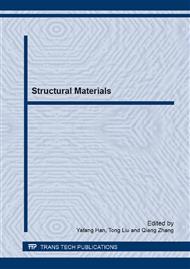p.272
p.277
p.282
p.289
p.298
p.304
p.311
p.317
p.323
Isothermal Bainite Transformation in Low Silicon TRIP Steel with Phosphorus Addition
Abstract:
The low silicon transformation-induced plasticity (TRIP) steel with phosphorus addition is consisted of the microstructure of retained austenite, ferrite and bainite which produced by intercritical annealing and isothermal bainite transformation followed by rapid cooling. In this study, isothermal bainite transformation of different experimental parameters in low silicon TRIP steel with phosphorus addition was investigated in laboratory. The addition of cheap element phosphorus, which has the same effect of silicon in retard the kinetics of carbide formation during isothermal bainite transformation, can reduce the silicon content, improve surface quality, solve galvanizing problem and reduce costs. The effect of bainite isothermal temperature, intercritical annealing temperature and heating rates were investigated by dilatometric experiment on a push-rod Formastor-FII high-speed dilatometer with radio frequency induction heating. The high resolution observations, composition analysis and elements distribution of microstructure were carried out using the electron scanning microscopy of a field emission electron probe microanalyzer (JEOL JXA-8530F) operating at 20KV accelerating voltage.
Info:
Periodical:
Pages:
298-303
Citation:
Online since:
April 2014
Authors:
Price:
Сopyright:
© 2014 Trans Tech Publications Ltd. All Rights Reserved
Share:
Citation:


